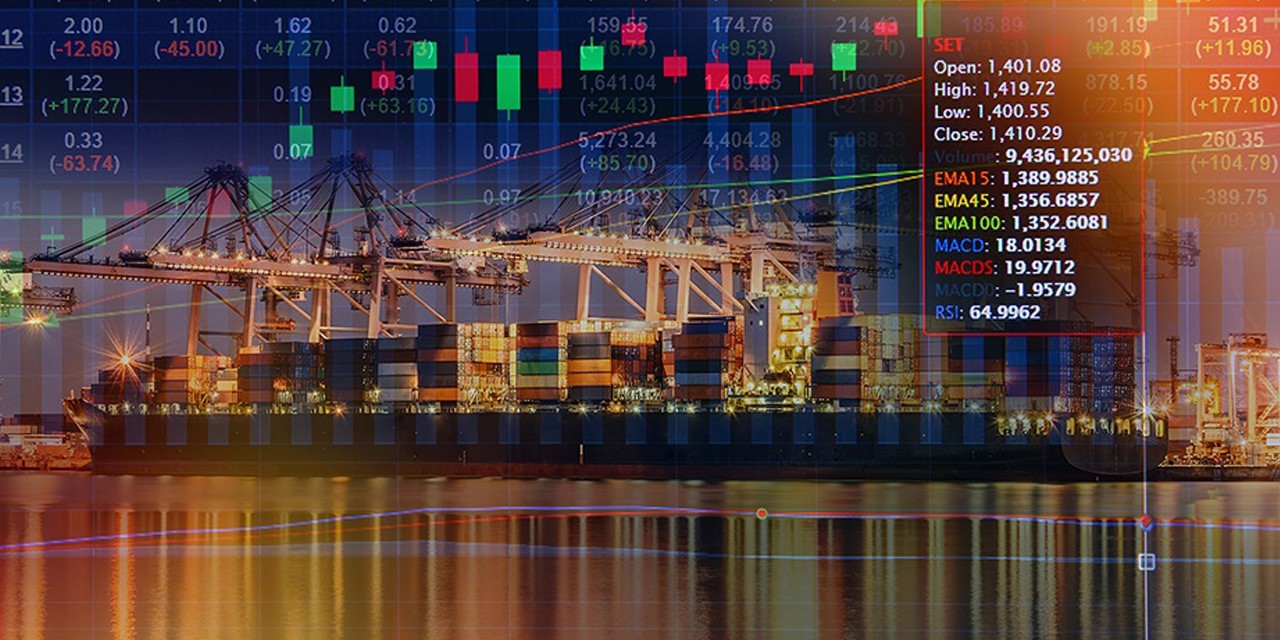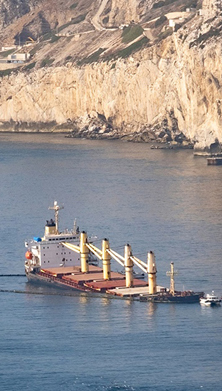This article is part of the Allianz Risk Barometer 2022
In a year marked by widespread disruption from the pandemic, storms, cyber-attacks and the blocking of the Suez Canal, it comes as no surprise that business interruption (BI) and supply chain disruption continues to be ranked highly among the business risks of most concern.
“For most organizations, the biggest fear is not being able to produce and deliver their products or services,” says Philip Beblo, Property Industry Lead, Technology, Media and Telecoms at AGCS. “Whether it’s a cyber-attack, a flood or a fire affecting a critical business location or supplier, business interruption events can have a very costly and long-lasting impact that can extend well beyond an individual organization.”
Cyber seen as the biggest BI fear
Despite the ongoing repercussions of Covid-19, the most feared cause of BI in this year’s survey is cyber (see graphic), which ranked second to pandemic in this category in 2021. The growing concern reflects the impact of recent ransomware attacks, but is also the result of digitalization of business models and supply chains, and the shift to remote working, which have accelerated during the pandemic.
Pandemic as a trigger for BI drops to third position, just behind natural catastrophes and ahead of shipping and transportation disruption, which both climb up the rankings in this category year-on-year. Shipping and transportation disruption is also a consequence of the pandemic, as Covid-19 port closures, labor shortages and a sudden surge in demand for container shipping has caused major delays and increased costs for businesses.
Which causes of business interruption does your company fear most?
Source: Allianz Risk Barometer 2022
Figures represent the percentage of answers of all participants who responded (1,118). Figures do not add up to 100% as up to three risks could be selected.
Do not underestimate traditional BI
Meanwhile, traditional BI triggers have continued to disrupt businesses. Following a string of extreme weather events in 2021, including hurricanes, winter storms and tornadoes in the US, and record-breaking floods in Europe and China, natural catastrophes are also a standout BI concern for businesses, rising one place to second in 2022. Fire and explosion, drops one position to fifth, yet remained a significant cause of BI in 2021.
“There are multiple triggers for business interruption, and in recent years cyber and pandemic have risen to the fore. But we should not underestimate traditional causes of businesses interruption like fire or weather. One of the largest recent business interruption losses for the insurance industry was triggered by a fire at a [semiconductor] plant, which exacerbated supply chain disruption in the automotive and electronics sectors,” says Maarten van der Zwaag, Global Head of Property Risk Consulting at AGCS.
Allianz Risk Barometer 2022
Business interruption: ↓ Rank 2 (42%)
Ranking history:
- 2021: 1 (41%)
- 2020: 2 (37%)
- 2019: 1 (37%)
- 2018: 1 (42%)
- 2017: 1 (37%)
Top risk in:
- Argentina
- Australia
- Canada
- China
- France
- Germany
- Ghana
- Kenya
- Morocco
- Namibia
- Poland
- Singapore
- South Korea
- Spain
- Turkey
- USA
Unprecedented supply chain disruption
One of the clearest manifestations of BI during the Covid-19 pandemic has been the unprecedented levels of supply chain disruption experienced throughout 2021 and into 2022. Companies have had to close or scale-back production where they have been unable to secure critical components, or forgo sales as the result of capacity issues, such as constraints on container shipping or labor shortages.
Post-lockdown surges in demand have combined with disruption to production and logistics, as Covid-19 outbreaks in Asia closed factories and causedrecord levels of congestion [1] at major container ship ports. Other knock-on effects included a spike in demand for energy, which led to power blackouts and further factory closures in Asia, as well as acute shortages of labor in the transport, hospitality and food production sectors. In Europe, ashortage of carbon dioxide [2], caused by reduced fertilizer production amid high gas prices, continues to affect supply chains in the food and drink sector. Pandemic-related delays have compounded supply chain problems arising from other unrelated events, such as the blockage of the Suez Canal by the container ship Ever Given. Even before the pandemic, global trade disputes and geopolitical tensions were causing many companies to rethink the structure of their supply chains and their reliance on critical suppliers in Asia. Brexit has also caused disruption and delays to trade between the UK and Europe.
What impact has the supply chain disruption of the past 12 months had on your company?
Source: Allianz Risk Barometer 2022
Figures represent the percentage of answers of all participants who responded (1,118).
Pushed to breaking point
The pandemic has exposed the extent of interconnectivity in modern supply chains, and how multiple events can come together to create global disruption, across multiple industries. For example, a perfect storm of events has resulted in a global shortage of semiconductors, with a surge in demand during the pandemic coinciding with supply constraints. Power outages in Texas following Winter Storm Uri and a drought in Taiwan – both key areas for global chip manufacturing – affected production, as did the fire at a Japanese chipmaker in March 2020. The global shortage in semiconductors is expected to cost the automotive sector alone$210bn [3] in lost revenues.
“For the first time, the resilience of global supply chains has been tested to breaking point,” says Beblo. “The global model of production, refined over the past four decades to maximize efficiency, also sets the stage for a perfect storm. Supply chain events have happened before, but last year’s disruption was on a global scale, impacting almost all sectors, up and down the value chain.”
Supply chain disruption is often long-lasting
BI risks are likely to remain elevated for the foreseeable future, driven by the pandemic, but also due to other emerging threats on the horizon. According to the recent Euler HermesGlobal Trade Report [4], new Covid-19 infections are likely to drive high levels of supply chain disruption into the second half of 2022, although mismatches in global demand and supply and constraint on shipping capacity – key drivers behind disruption in 2021 – are predicted to ease from H2 2022, assuming no further unexpected developments.
Longer-term, digitalization and climate change could bring additional supply chain volatility from rising demand for critical materials, such as rare earth elements used in clean energy sources, and stresses placed on power and communications infrastructure. Fixing supply chains and building resilience takes time, and comes at a cost, explains Beblo: “Past events have shown the impact of a business interruption event can continue for many years. A fire at a semiconductor plant can’t be fixed in a matter of weeks or months, so it is important to have alternative suppliers and not depend on a small number of suppliers. Reducing reliance on critical suppliers – such as manufacturers in Asia – could take years to build alternative supplies in Europe and the US.”
Resilience becoming a competitive advantage
The pandemic and resulting BI and supply chain disruption has been a wake-up call. Such disruption has raised awareness of the issue at both company and governmental level, triggering reviews of business resilience and critical supply chains. “Awareness has gone beyond risk management departments to become an important issue across the entire company. There is now a desire and willingness among top management to bring greater transparency to supply chains and to work with data to better understand the risks. Momentum has been building and increasingly businesses see resilience as a competitive advantage,” says van der Zwaag.
According toMcKinsey [5], almost two thirds (61%) of organizations it surveyed have increased inventory of critical products over the past 12 months in a bid to improve supply chain resilience. However, more needs to be done. Only 23% of the firms surveyed expanded back-up production sites and just 15% turned to nearshoring or increasing their supplier base. Crucially, while 95% of those surveyed now have formal supply chain risk management processes, just under half of the companies said they understand the location of their tier-one suppliers and the key risks those suppliers face, but only 2% can make the same claim about suppliers in the third tier and beyond.
With greater awareness of the risk, there is also a realization that not all BI risks are easy to insure and to find meaningful capacities, explains Beblo: “Capacity for large business interruption and contingent business interruption risks is currently limited, especially where there is a lack of transparency. The better the transparency and data, the more meaningful capacity we, as insurers, are able to provide. We still see clients where their mapping of supply chain risk is not as detailed as it should be. It is critical to understand the value chain and identify the most important exposures in order to mitigate the risks and create solutions to transfer or reduce the risk.”
References
[1] American Shipper, It’s official: 96 container ships are waiting to dock at SoCal ports, December 5, 2021
[2] Reuters, UK carbon dioxide shortage spilling over into rest of Europe, Nippon Gases – says FT, September 22, 2021
[3] Alix Partners, Shortages related to semiconductors to cost the auto industry $210bn in revenues this year, September 23, 2021
[4] Euler Hermes and Allianz Research, Global Trade Report - Battling Out of Supply Chain Disruptions, December 9, 2021 17
[5] McKinsey & Company, How Covid-19 is reshaping supply chains, November 23, 2021
Picture: Shutterstock
Newsletter
Keep up to date on all news and insights from AGCS















